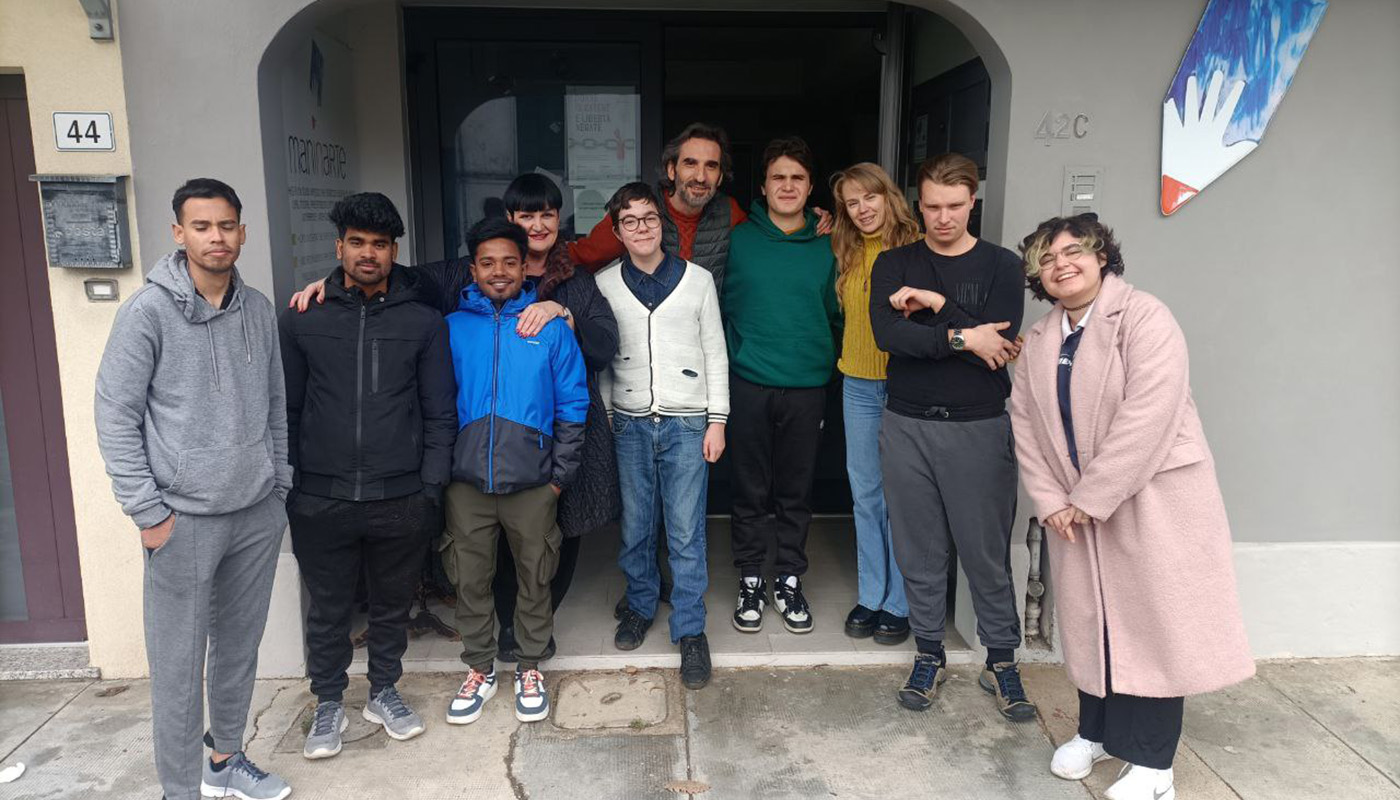According to a beautiful intuition, the three matching and converging parts at the center of the form, representing the memory of the alliance, of the mutual recognition of a humanity that, beyond cultural, political, social, religious, temporal and identity boundaries makes us all brothers and children of this planet, have been divided according to lines that exactly follow the path of the three important rivers that cross the countries of origin of the children: The Brahmaputra for Bangladesh, the Medjerda for Tunisia, the Isonzo for Slovenia and Italy.
Another particular idea chosen by the students, very evocative of the themes of contact, proximity, intimacy and which takes the form of some ancient hospital tiles, was to reiterate the shape of the hand that appears throughout the work in infinite variations, but we do not want to reveal too much.
From a didactic point of view, using the methods of visual thinking and open techniques aimed at making artistic inexperience not an obstacle, but an advantage, the activity has strongly focused on the expressiveness of everyone, trying to pave the way for uniqueness and different cultural backgrounds. Just as each one can be understood in the individual sense of “person“ (“per se unum“) and, at the same time, in the relational meaning of “prosopon” (“the one who stands in front of me”), because we are both unrepeatable individuals and the result of mirroring in the eyes of others, so the work is the manifestation of what has been a continuous process of dialogue, of confrontation between oneself and the other throughout the workshop.
Seeing the children enthusiastic, assertive, curious about their travel companions, intense and profound in their reflections on even complex topics, gave us companions a feeling of joy and the awareness that new and edifying horizons of meaning, if fostered, can create solid bridges between lives fully lived.
The artifact will initially be presented at the Transalpine Square, then it will become a traveling work and, finally, separated and exhibited in the three locations of Ad Formandum, San Luigi and Ljudska Univerza Ajdovščina.

